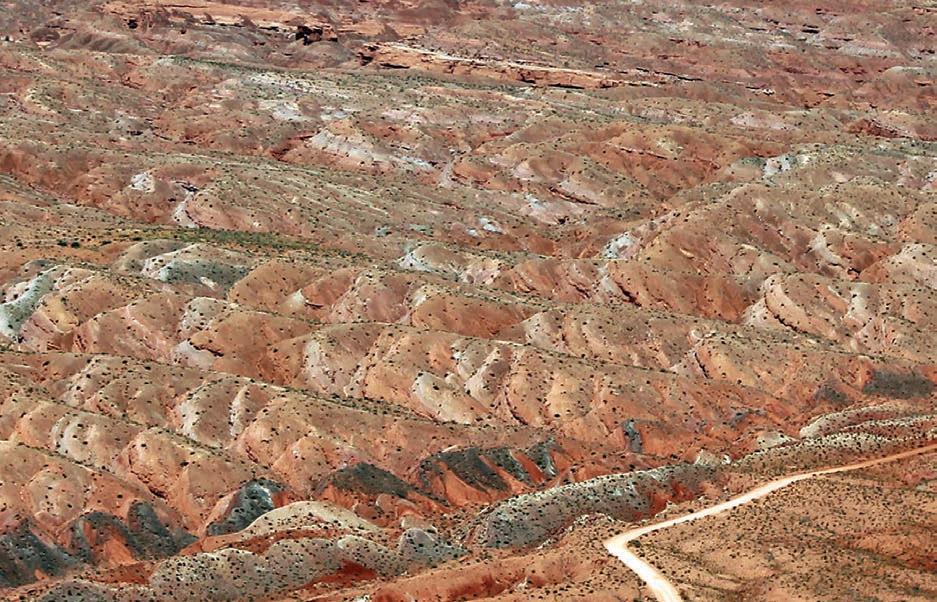
5 minute read
Watered down Supreme Court imperils arroyos, wetlands
by Jonathan Thompson
THE NEWS: The U.S. Supreme Court hands down a ruling in the long-running Sackett v. Environmental Protection Agency case that significantly alters and narrows the scope of the Clean Water Act.
Advertisement
THE CONTEXT: Sometimes it feels like the Supreme Court doesn’t like – or maybe just doesn’t get – the arid Western U.S. Last week’s ruling is a prime example: It potentially removes federal protections from thousands of miles of Western waterways, making it far easier for developers to pollute or destroy arroyos, wetlands and ephemeral streams.
The specific case dates back to 2007, when EPA officials ordered Chantell and Michael Sackett to stop backfilling their soggy half-acre lot on the shores of Idaho’s Priest Lake, where they wanted to build a cabin. The EPA had determined that because the wetlands were adjacent to a navigable, interstate water (Priest Lake), it could be classified as “waters of the United States,” or WOTUS, and was therefore protected by the CWA.
The Sacketts disagreed and took the feds to court. As the case wound its way through the legal system, the Sacketts’ cabin site transformed into the front line of a 50-year ideological battle over the definition of what constitutes legally decreed “waters.”
For years, the EPA and Army Corps of Engineers – the agencies charged with enforcing the CWA – considered WOTUS to include everything from arroyos to prairie potholes to sloughs to mudflats, so long as the destruction or degradation thereof might ultimately affect traditionally navigable waters or interstate commerce (which could include recreation, sightseeing or wildlife watching).
It was a broad definition that gave the agencies latitude to “restore and maintain the chemical, physical and biological integrity of the Nation’s waters,” as Congress mandated when creating the law in 1972.
Property-rights ideologues pushed back on the definition, saying it was too broad and therefore gave the feds too much power to curb pollution or restrict development. Occasionally, a developer would use this rationale to flout the rules, and a few of the cases made their way to the Supreme Court.
In the 1985 Bayview case, the justices upheld the broad definition of WOTUS, and in the 2001 SWANCC case, they left the definition alone but found that isolated ponds were not protected by the CWA, simply because they were migratory bird habitat.
Then, in his plurality opinion on the 2006 Rapanos case, the late Justice Antonin Scalia wrote what would become the right-wing’s preferred definition of waters of the U.S. He argued that they should include only “relatively permanent, standing or continuously flowing bodies of water … described in ordinary parlance as streams, oceans, rivers and lakes.” Scalia’s definition emphatically excluded “ephemeral streams” and “dry arroyos in the middle of the desert.” (He also referred to the “immense arid wastelands” of the Western U.S., giving an idea of where this guy’s coming from.)
Justice Anthony Kennedy disputed Scalia, saying instead the CWA should extend to any stream or body of water with a “significant nexus” to navigable waters, determined by a wetland’s or waterway’s status as an “integral part of the aquatic environment.”
The two conflicting Rapanos opinions have guided the agencies’ enforcement of the CWA ever since, with the George W. Bush and Trump administrations leaning toward Scalia’s narrow, anti-arroyo definition, and the Obama and Biden administrations adopting Kennedy’s “significant nexus” test.
Fast forward to the recent Sackett decision, which has two parts. First, the justices all agreed that the EPA should not have fined the Sacketts for filling in their wetland, because it does not fall under the CWA’s jurisdiction. But the wider ramifications come from Justice Samuel Alito’s rewriting of the definition of “waters of the U.S.” in his majority opinion – and the debate among justices it sparked.
Sackett overtly focuses on wetlands, as did most of the back-and-forth between the disagreeing justices, who sparred over the definition of “adjacent.” Alito and the majority essentially believe “adjacent” and “adjoining” are synonymous, which removes any wetland lacking a continuous surface connection to a navigable body of water from federal jurisdiction. He also puts the kibosh on the “significant nexus” test. (Justices Clarence Thomas and Neil Gorsuch go even further, trying to reduce waters of the U.S. to rivers or lakes that can actually be navigated by ships.) Even Justice Brett Kavanaugh disagreed with Alito’s narrow definition, pointing out that “adjacent” is not the same as “adjoining.”
You might be wondering how any of this affects the arid West, where wetlands – either adjacent or adjoining – aren’t all that common. After all, intermittent streams only got passing mentions in the opinions, and not once does the term “arroyo” appear. But there’s little question that arroyos and ephemeral streams will end up suffering collateral damage. The Sackett majority defers to Scalia’s Rapanos definition, writing: “ … we conclude that the Rapanos plurality was correct: the CWA’s use of ‘waters’ encompasses ‘only those relatively permanent, standing or continuously flowing bodies of water forming geographical features that are described in ordinary parlance as streams, oceans, rivers and lakes.’”
So, yeah, we Southwesterners do refer in our ordinary parlance to many an intermittent stream as a “river,” e.g. the Santa Fe River, the Santa Cruz River, the Rio Puerco(s), and so forth. But I doubt that would have been adequate for Scalia and now for Alito and friends.

It’s not clear yet how all of this will play out on the ground, except that the Sacketts can finally build their cabin without fear of an EPA fine. The CWA, one of the nation’s most important environmental laws, is now weaker than it was a couple of weeks ago, and countless wetlands, sloughs, arroyos and ponds are now more vul- nerable to development and pollution. Justice Elena
Kagan summed it up in her response to Alito: “The majority thus alters – more precisely, narrows the scope of –the statute Congress drafted,” she wrote, adding that the opinion “… is an effort to cabin the anti-pollution actions Congress thought appropriate.”
Steve Bannon, former President Donald Trump’s right-hand man, once said the goal of the administration was the “deconstruction of the administrative state.” He wanted to eviscerate regulations protecting human health and the environment, so they would no longer “burden” corporations or stand in their way of reaping boundless profit. Trump may no longer be president, and both he and Bannon may be headed to jail soon, but their agenda lives on among the majority of the nation’s highest court, which, Kagan wrote, has appointed “itself as the national decision-maker on environmental policy.”
She continued, referring to last year’s decision that hindered the EPA from enforcing clean air laws: “So I’ll conclude, sadly, by repeating what I wrote last year, with the replacement of only a single word. ‘(T)he Court substitutes its own ideas about policymaking for Congress.’ The Court will not allow the CWA to work as Congress instructed. The Court, rather than Congress, will decide how much regulation is too much.’ Because that is not how I think our government should work – more, because it is not how the Constitution thinks our government should work … .”
The Land Desk is a newsletter from Jonathan P. Thompson, author of “River of Lost Souls,” “Behind the Slickrock Curtain” and “Sagebrush Empire.” Subscribe at: landdesk.org



